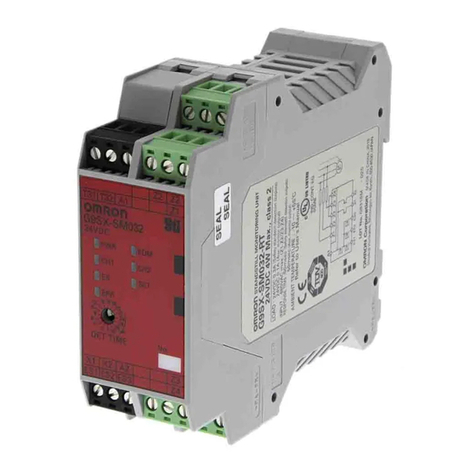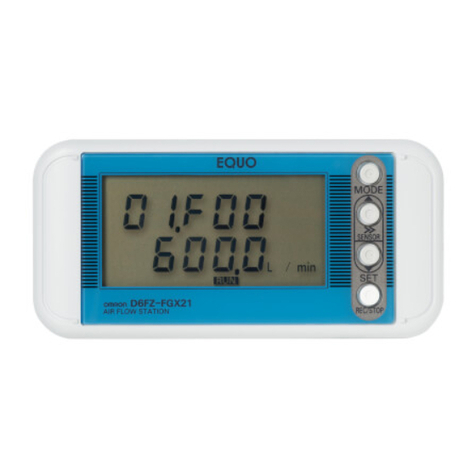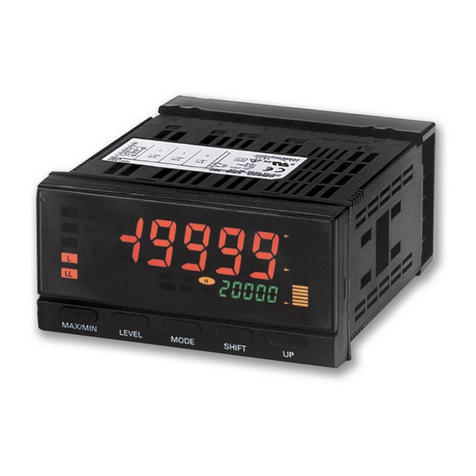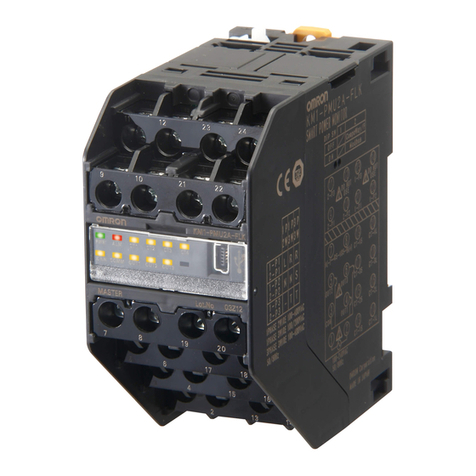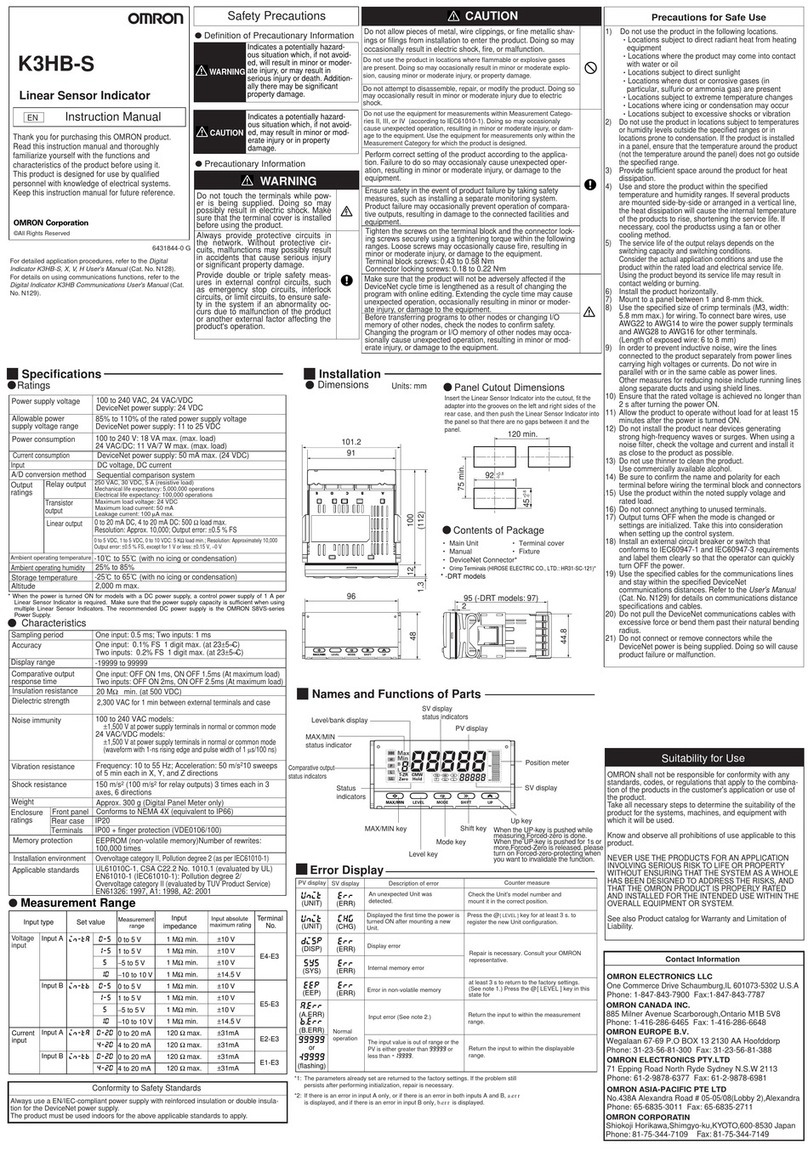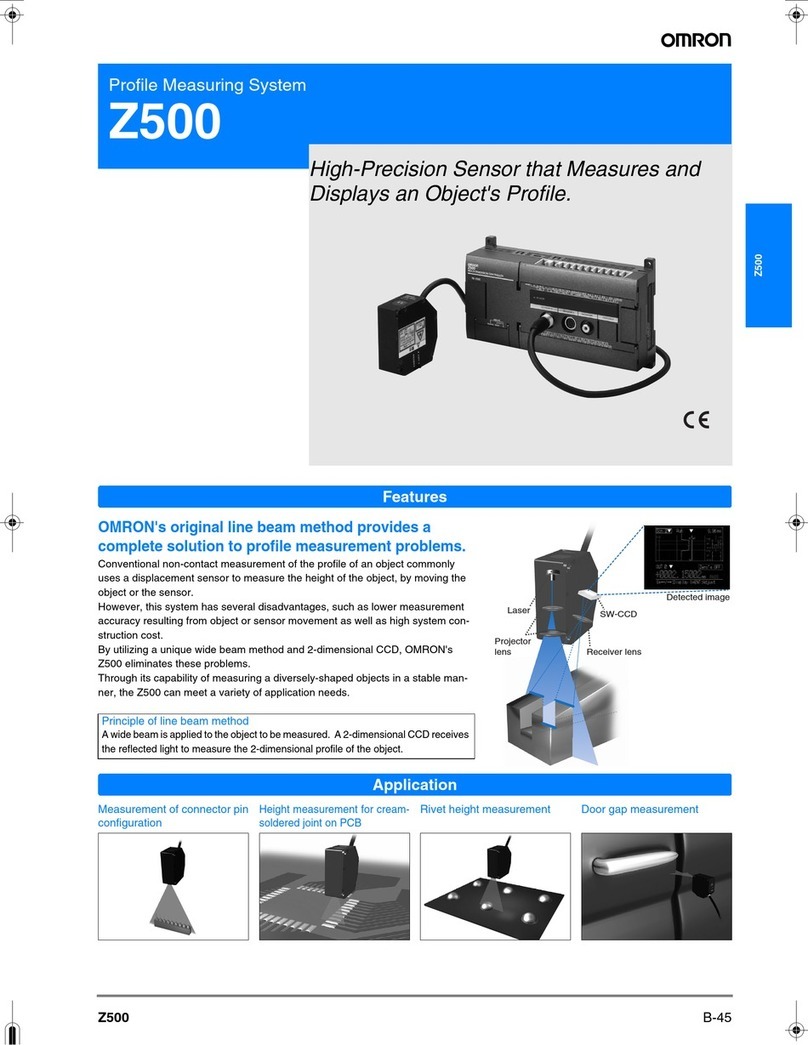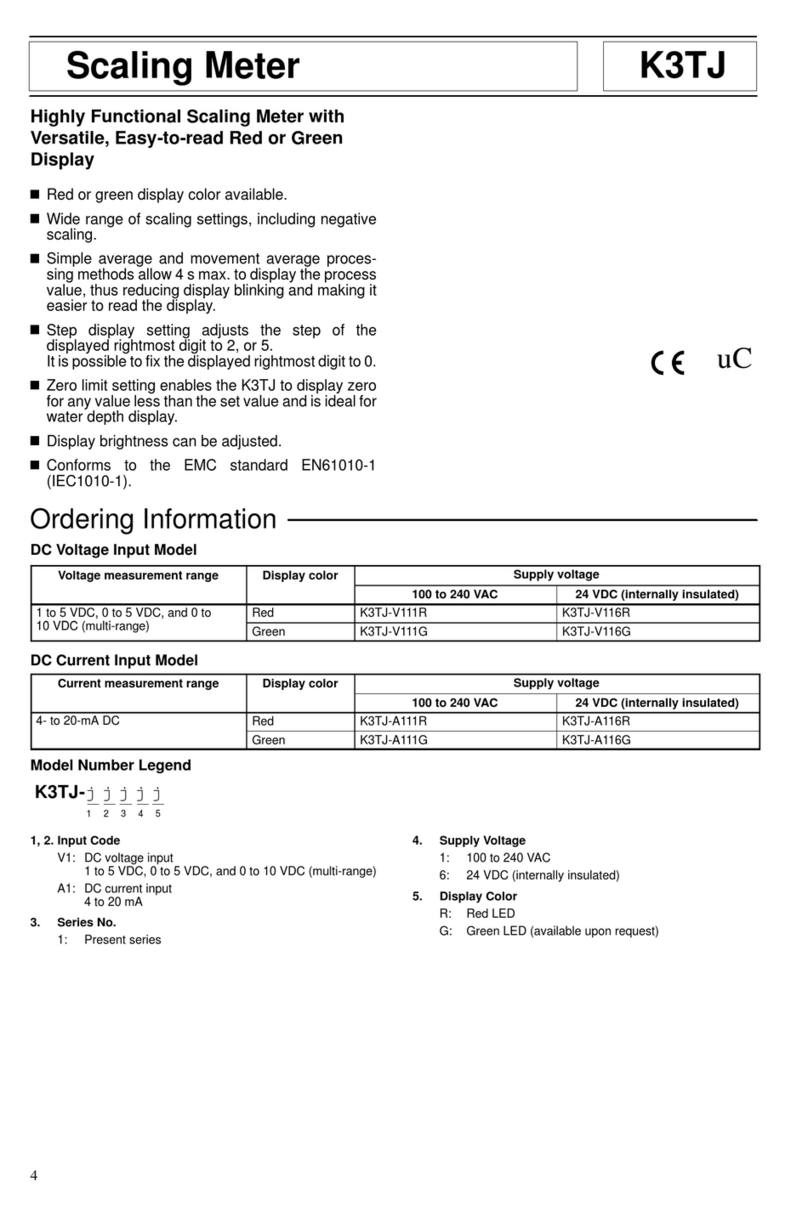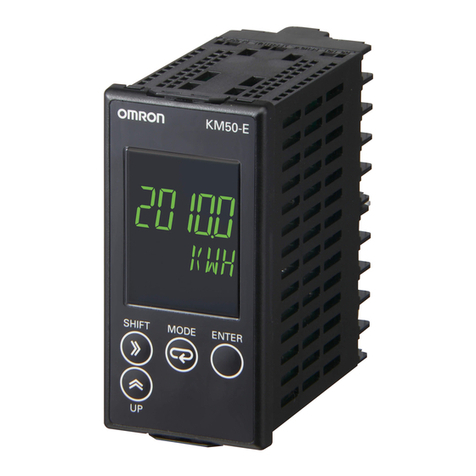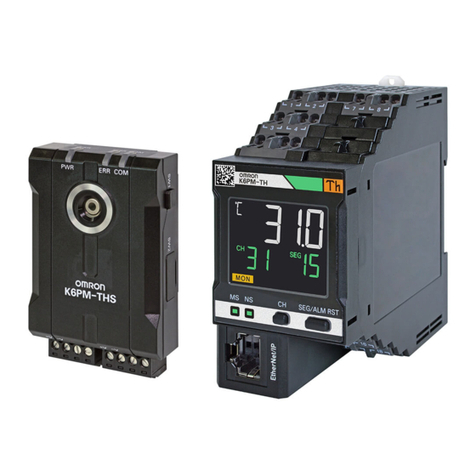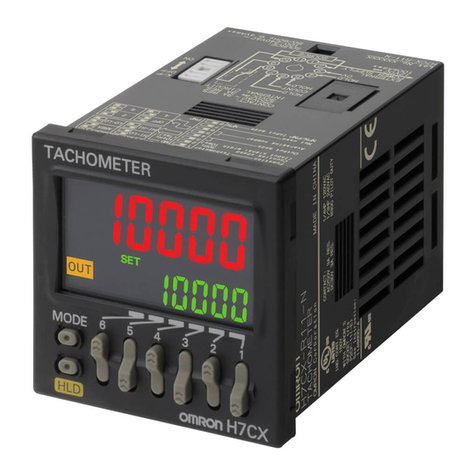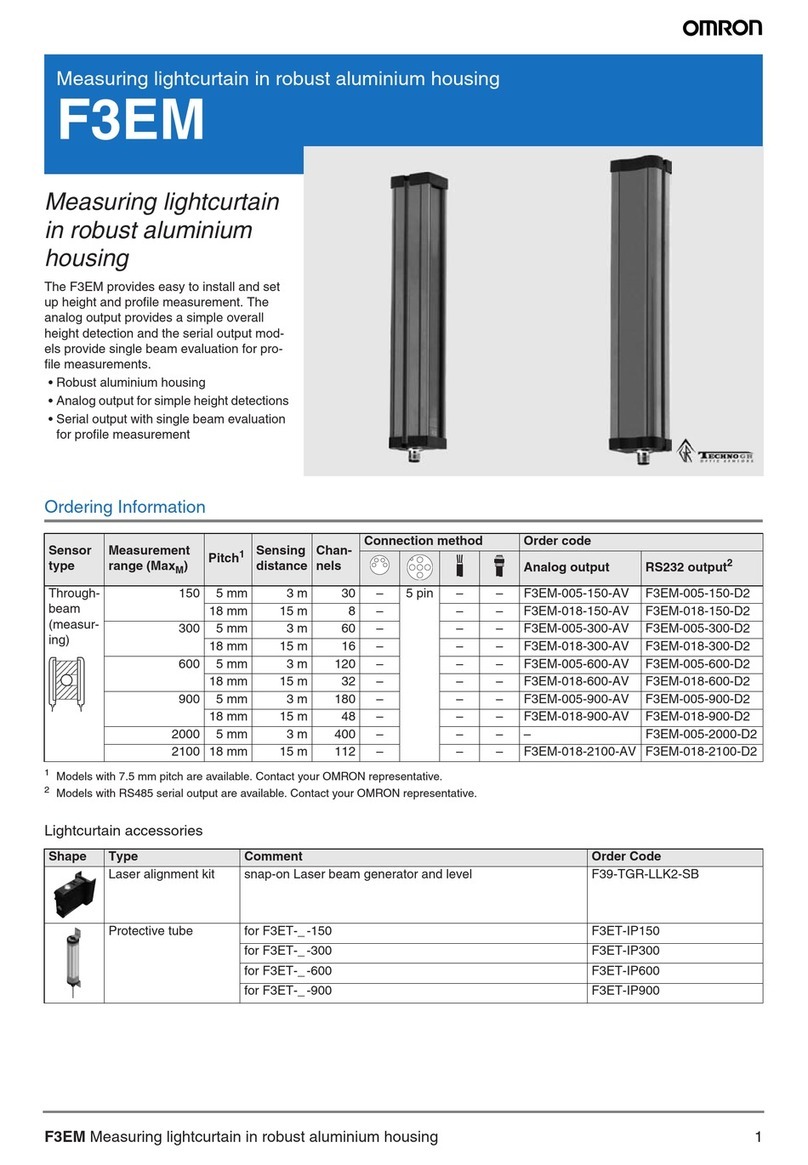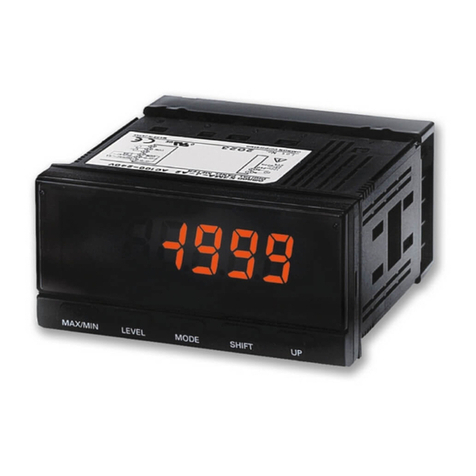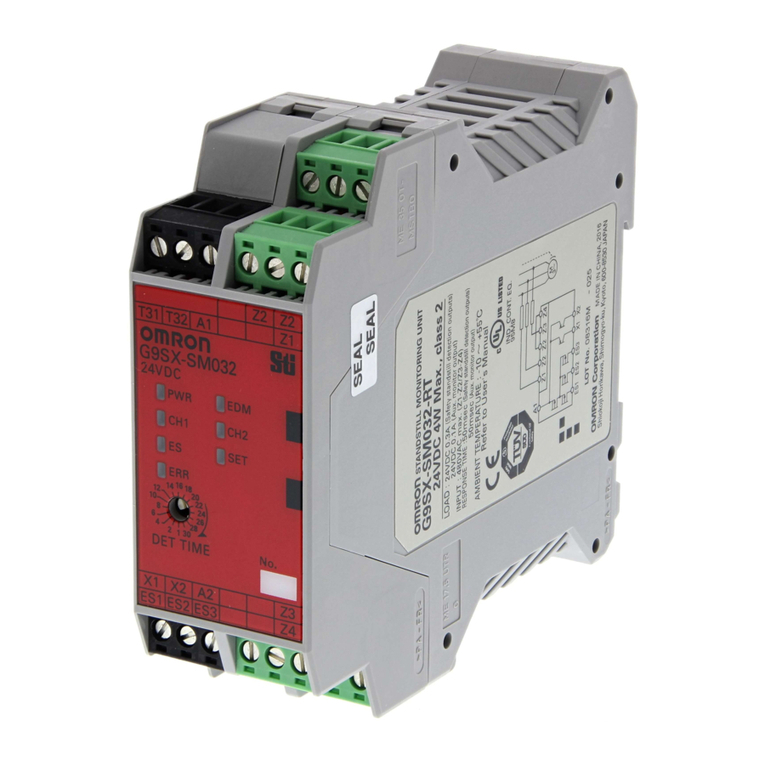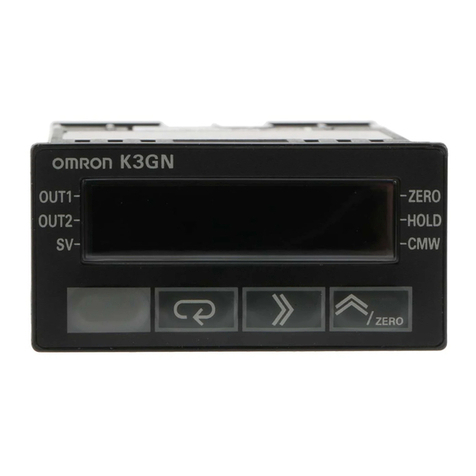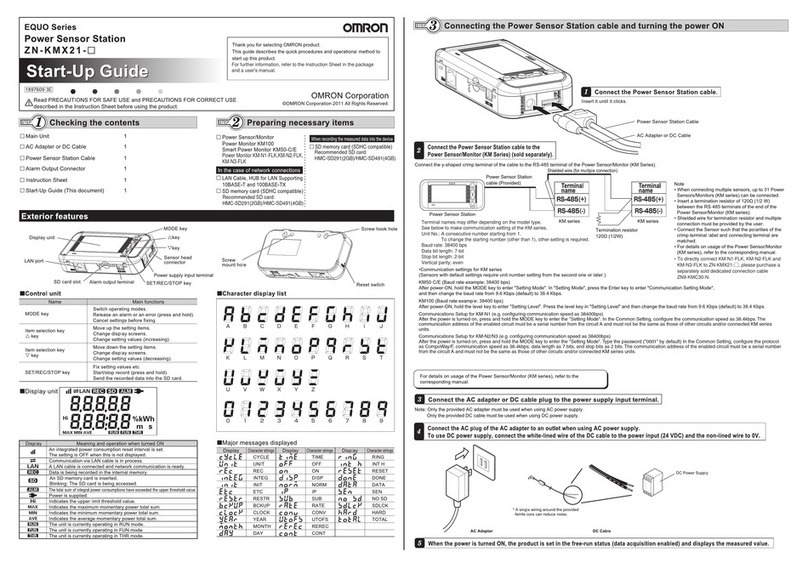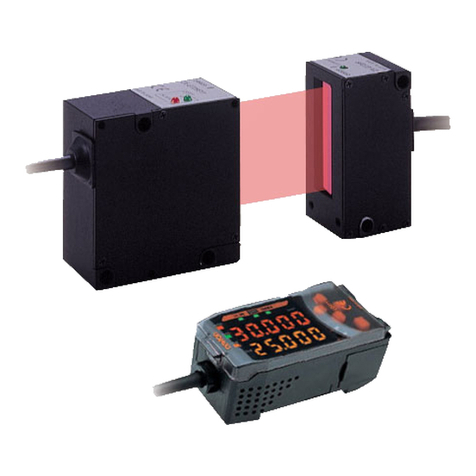
6Rotary Pulse Indicator K3HB-R
■Characteristics
Display range −19,999 to 99,999
Measurement accuracy
(at 23±5°C)
Functions F1, F6: ±0.006% rgd ±1 digit (for voltage pulse/open collector sensors)
Functions F2 to F5: ±0.02% rgd ±1 digit (for voltage pulse/open collector sensors)
Measurement range Functions F1 to F6: 0.5 mHz to 50 kHz (for voltage pulse/open collector sensors)
Input signals No-voltage contact (30-Hz max. with ON/OFF pulse width of 15 ms min.)
Voltage pulse (50-KHz max. with ON/OFF pulse width of 9 µs min.; ON voltage: 4.5 to 30 V;
OFF voltage: −30 to 2 V; input impedance: 10 kΩ)
Open collector (50-KHz max. with ON/OFF pulse width of 9 µs min.)
Connectable sensors ON residual voltage: 3 V max.
OFF leakage current: 1.5 mA max.
Load current: Must have a switching capacity of 20 mA or higher.
Must be able to properly switch load currents of 5 mA or less.
Comparative output response
time (transistor output)
Functions F1 to F6: 100 ms max. (time until the comparative output is made when there is a forced sudden
change in the input signal from 15% to 95% or 95% to 15%.)
Linear output response time Functions F1 to F6: 110 ms max. (time until the final analog output value is reached when there is a forced
sudden change in the input signal from 15% to 95% or 95% to 15%.)
Insulation resistance 20 MΩ min. (at 500 VDC)
Dielectric strength 2,300 VAC for 1 min between external terminals and case
Noise immunity 100 to 240 VAC models:
±1,500 V at power supply terminals in normal or common mode
(waveform with 1-ns rising edge and pulse width of 1 µs/100 ns)
24 VAC/VDC models:
±1,500 V at power supply terminals in normal or common mode
(waveform with 1-ns rising edge and pulse width of 1 µs/100 ns)
Vibration resistance Frequency: 10 to 55 Hz; Acceleration: 50 m/s2, 10 sweeps of 5 min each in X, Y, and Z directions
Shock resistance 150 m/s2(100 m/s2for relay outputs) 3 times each in 3 axes, 6 directions
Weight Approx. 300 g (Base Unit only)
Degree of
protection
Front panel Conforms to NEMA 4X for indoor use (equivalent to IP66)
Rear case IP20
Terminals IP00 + finger protection (VDE0106/100)
Memory protection EEPROM (non-volatile memory)
Number of rewrites: 100,000
Applicable standards UL61010C-1, CSA C22.2 No. 1010.1 (evaluated by UL)
EN61010-1 (IEC61010-1): Pollution degree 2/Overvoltage category II
EN61326: 1997, A1: 1998, A2: 2001
EMC EMI: EN61326+A1 industrial applications
Electromagnetic radiation interference
CISPR 11 Group 1, Class A: CISPRL16-1/-2
Terminal interference voltage
CISPR 11 Group 1, Class A: CISPRL16-1/-2
EMS: EN61326+A1 industrial applications
Electrostatic Discharge Immunity
EN61000-4-2: 4 kV (contact), 8 kV (in air)
Radiated Electromagnetic Field Immunity
EN61000-4-3: 10 V/m 1 kHz sine wave amplitude modulation (80 MHz to 1 GHz, 1.4 to 2 GHz)
Electrical Fast Transient/Burst Immunity
EN61000-4-4: 2 kV (power line), 1 kV (I/O signal line)
Surge Immunity
EN61000-4-5: 1 kV with line (power line), 2 kV with ground (power line)
Conducted Disturbance Immunity
EN61000-4-6: 3 V (0.15 to 80 MHz)
Power Frequency Magnetic Immunity
EN61000-4-8: 30 A/m (50 Hz) continuous time
Voltage Dips and Interruptions Immunity
EN61000-4-11: 0.5 cycle, 0°/180°, 100% (rated voltage)


